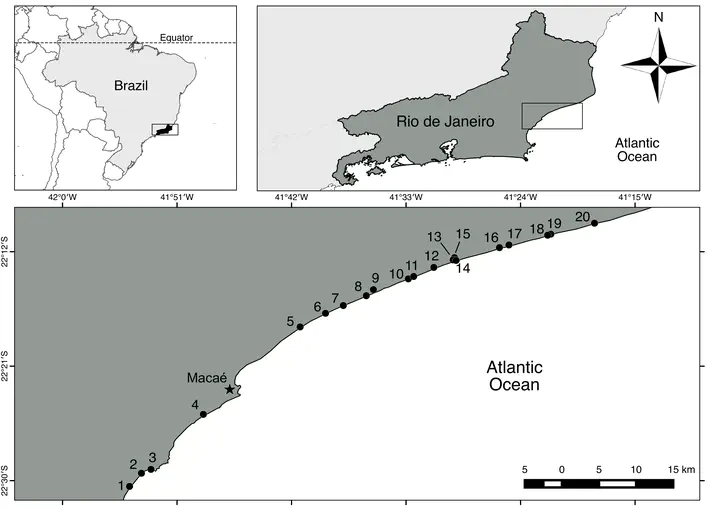Salinity drives the virioplankton abundance but not production in tropical coastal lagoons

Abstract
Viruses are the most abundant components of microbial food webs and play important ecological and biogeochemical roles in aquatic ecosystems. Virioplankton is regulated by several environmental factors, such as salinity, turbidity, and humic substances. However, most of the studies aimed to investigate virioplankton regulation were conducted in temperate systems combining a limited range of environmental variables. In this study, virus abundance and production were determined and their relation to bacterial and limnological variables was assessed in 20 neighboring shallow tropical coastal lagoons that present wide environmental gradients of turbidity (2.32–571 NTU), water color (1.82–92.49 m−1), dissolved organic carbon (0.71–16.7 mM), salinity (0.13–332.1‰), and chlorophyll-a (0.28 to 134.5 μg L−1). Virus abundance varied from 0.37 × 108 to 117 × 108 virus-like-particle (VLP) mL−1, with the highest values observed in highly salty aquatic systems. Salinity and heterotrophic bacterial abundance were the main variables positively driving viral abundances in these lagoons. We suggest that, with increased salinity, there is a decrease in the protozoan control on bacterial populations and lower bacterial diversity (higher encounter rates with virus specific hosts), both factors positively affecting virus abundance. Virus production varied from 0.68 × 107 to 56.5 × 107 VLP mL−1 h−1 and was regulated by bacterial production and total phosphorus, but it was not directly affected by salinity. The uncoupling between virus abundance and virus production supports that the hypothesis that the lack of grazing pressure on viral and bacterial populations is an important mechanism causing virus abundance to escalate with increasing salt concentrations.
Citation
Junger, P.C., Amado, A.M., Paranhos, R. et al. Salinity Drives the Virioplankton Abundance but Not Production in Tropical Coastal Lagoons. Microb Ecol 75, 52–63 (2018). https://doi.org/10.1007/s00248-017-1038-3